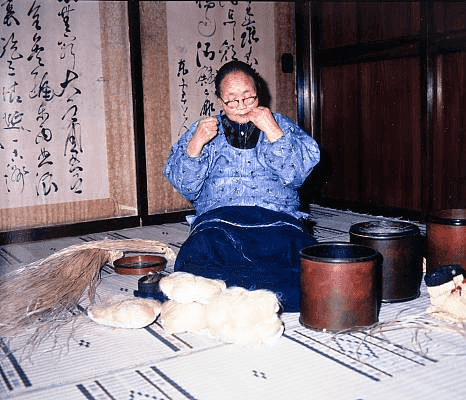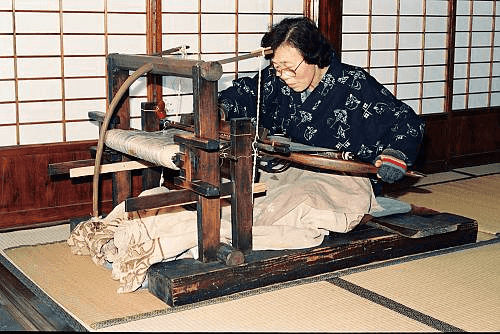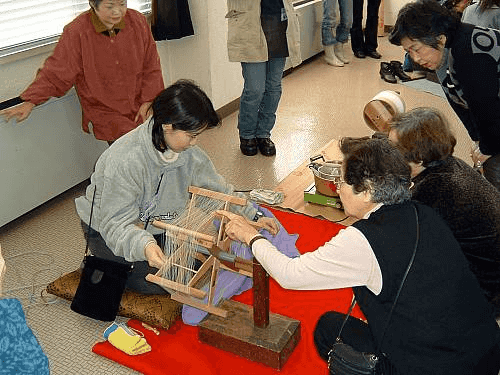The high-quality, lightweight patterned textiles made from the ramie plant are ideal for the hot and humid Japanese summer. Ojiya-chijimi, Echigo-jofu: techniques of making ramie fabric in Uonuma region, Niigata Prefecture developed in the north-western part of Japan’s main island and bear the mark of the region’s cooler climate – particularly its snowy winters. Ramie fibres are split from the plant by fingernail and twisted into threads by hand. In tie-dying, bundles of ramie threads are bound tightly with cotton before dying so as to produce a geometric or floral pattern when the thread is woven into fabric using a simple back-strap loom. The cloth is washed in hot water and massaged with the feet, after which the wet fabric is placed on the snow-covered fields for ten to twenty days to be lightened by the sun and the ozone released by the snow’s evaporation. Clothes produced by this method have been popular among people of various social classes for centuries. Practised today mainly by older craftspeople, the art remains a point of cultural pride and an important tool for reinforcing a sense of identity for the community.


